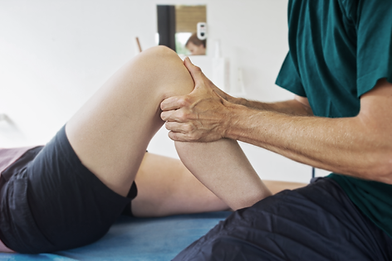top of page
Kitsap Youth Sports
Kitsap Youth Sports

Anterior Cruciate Ligament (ACL) Tears
Recognition & Management

The ACL is one of four major stabilizing ligaments of the knee.
The ACL provides primarily provides stability during rotational movements such as cutting and planting.
Studies show the majority of ACL tears occur during a non-contact episode.
Females are up to 8x more likely to tear their ACL in a non-contact injury than males. This is due to many factors including differences in body mechanics, joint laxity, joint alignment and hormones.
ACL tears are most common in agility sports - such as soccer, football and basketball.
Studies show that ACL injury prevention programs can help reduce the risk of non-contact ACL tears in athletes.
THE
FACTS


SYMPTOMS
May or may not have felt a pop at the time of injury.
Pain initially that may or may not persist.
Often a large amount of swelling in the knee that typically begins within a few hours of injury.
May have a decrease in motion due to swelling and/or pain.
Possible discomfort walking.
May experience a feeling of instability or the knee giving out/buckling.
Sympom

An ACL tear is diagnosed by a physician.
Patient's history and exam will lead the physician to a diagnosis.
A Magnetic Resonance Imaging (MRI) may be ordered to support the diagnosis.
An x-ray may be ordered to rule out bony injury.

DIAGNOSIS
Diagnosis


TREATMENT
Icing can be used to help manage pain and swelling.
Treatment options will be recommended based on your physician's exam and findings.
Surgery may be recommended to reconstruct the ACL using graft tissue.
Treatment

ACL prevention programs are designed to strengthen the lower body and reduce the risk of injury by altering the athlete's biomechanics during agility movements.
These programs are particularly useful in young female athletes.
Many programs are designed to be integrated into the warm up before practices or games begin.
Click the PDF below for a copy of our Lower Extremity Injury Prevention Program.

PREVENTION
Prevention
The facts
bottom of page